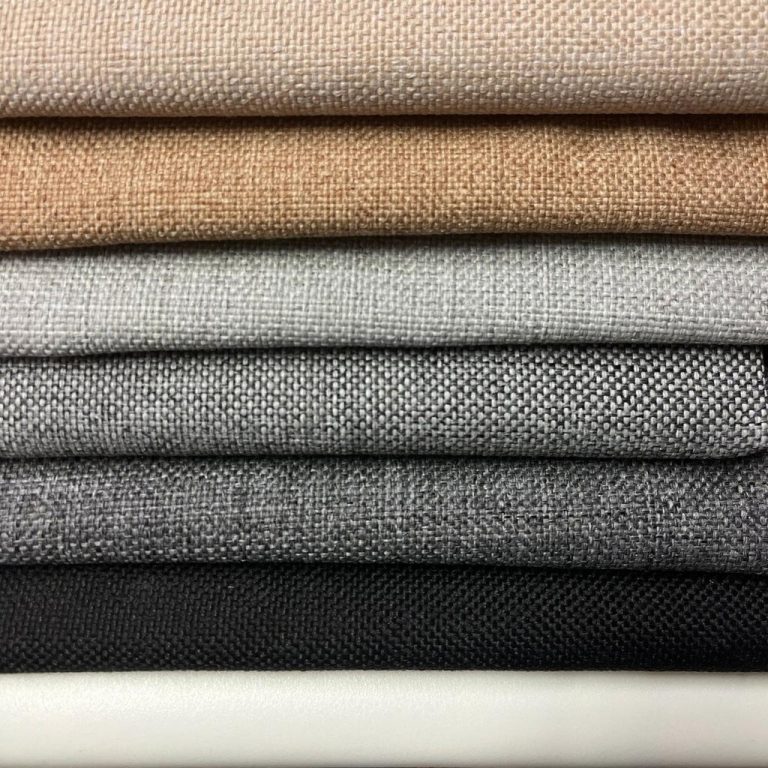Wrapping bare components with upholstery fabric in a van isn’t just about aesthetics! It comes with several other perks:
- Noise reduction. Upholstery absorbs sound and minimizes reverberation compared to bare wood or metal.
- Thermal insulation. Adding Landau foam padding and fabric provides an extra layer of insulation.
- Comfort. That foam and fabric adds a layer of softness and support.
Here’s how we upholstered the wall panels and frames in FarOutVan2. Let’s dive in!
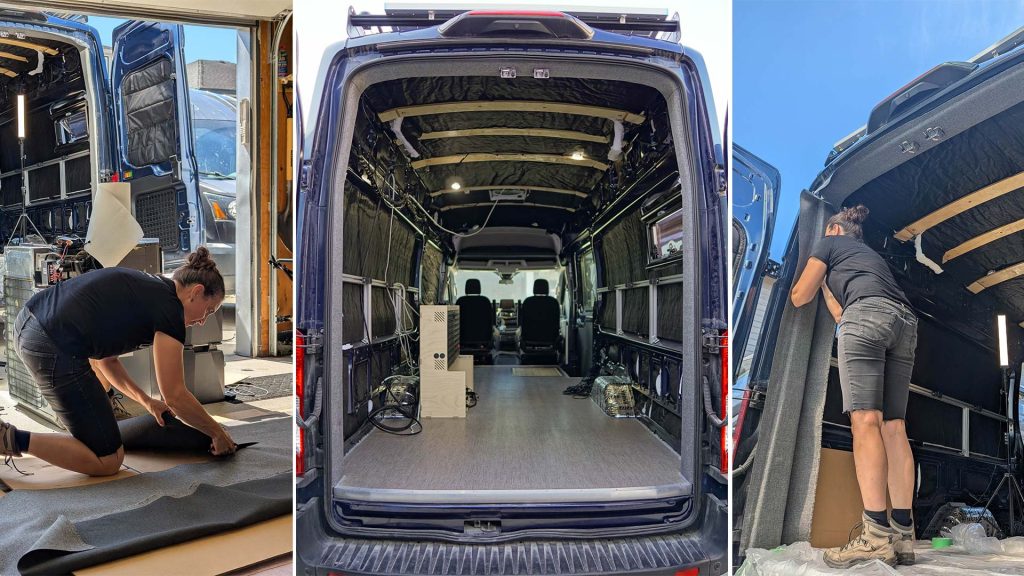
1. Material
Fabric
We used Gemini Tweed Fabric (formerly Marathon Tweed, also known as Duramax). It’s durable, easy to clean, UV-resistant, and hydrophobic (repels water). It’s typically sold by the yard (1 yard = 3 feet) x 54″ wide:
Foam Padding
Landau is a closed-cell polyethylene foam. It’s waterproof, flexible, lightweight, and adds some thermal and sound insulation properties. It’s typically sold by the yard (1 yard = 3 feet) x 60″ wide. 1/8″ thickness works great for upholstery padding:

Adhesive
An adequate upholstery adhesive shall be heat-resistant, compatible with foam and fabric, and relatively simple to apply (for us DIYers!). We’ve seen several people using adhesive that gave good results at first glance, but failed in the long run (bubbles, gaps, etc). Here is what’s work:
- 3M 90 Spray Adhesive. A good go-to adhesive, it works for most projects (not compatible with polystyrene foams, such as XPS Foam Boards we used for our Floor).
- 3M 74 Spray Adhesive. A safe alternative for projects involving rigid foam (XPS, foam blobs).
In all cases with any adhesive, pay close attention to the directions (application, bond time, open time, etc.).
Others
| ITEM | DESCRIPTION | BUY |
|---|---|---|
| Isopropyl Alcohol | To clean and degrease metal surfaces prior bonding. | Amazon |
| Painters Tape | To mask surfaces. | Amazon |
| Aluminum Flashing | To plug large cutouts or reconstruct curved surfaces. (see D-Pillar section) | Amazon |
| Aluminum Tape | To bond aluminum flashing (and more). | Amazon |
| Fabric Scissors | To cut fabric. | Amazon |
| Utility Knife | To trim foam and fabric to size. | Amazon |
2. D-Pillar
Pre-Requisite
If you haven’t already, now is a good time to insulate the interior of the D-Pillar, before it’s covered with upholstery!
2.1. Re-Route the Electrical Harness
1. Remove the harness clips and retention devices to give it some slack:

2. Use tape to route it out of the way (it’s temporary; the final routing will be made while building the ceiling):

2.2. Remove the Lights and Make a Smooth Surface
1. Pop the lights out and disconnect the wire:

2. Use scissors to cut Aluminum Flashing to size (6″x6″ worked for us):

3. Use Aluminum Tape to fix the Aluminum Flashing in place:

4. Smooth surface to upholster:
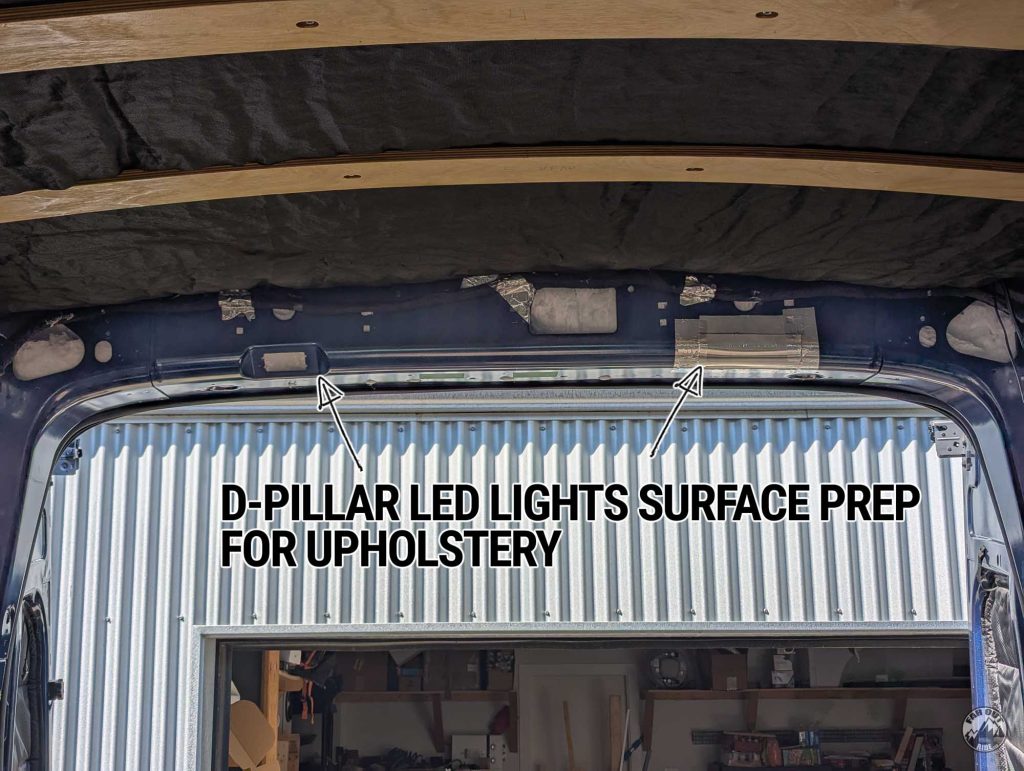
2.3. Remove the Door Lock Striker Plates
1. Pop the striker plastic covers out:

2. Use a T40 Torx to remove the striker plates:
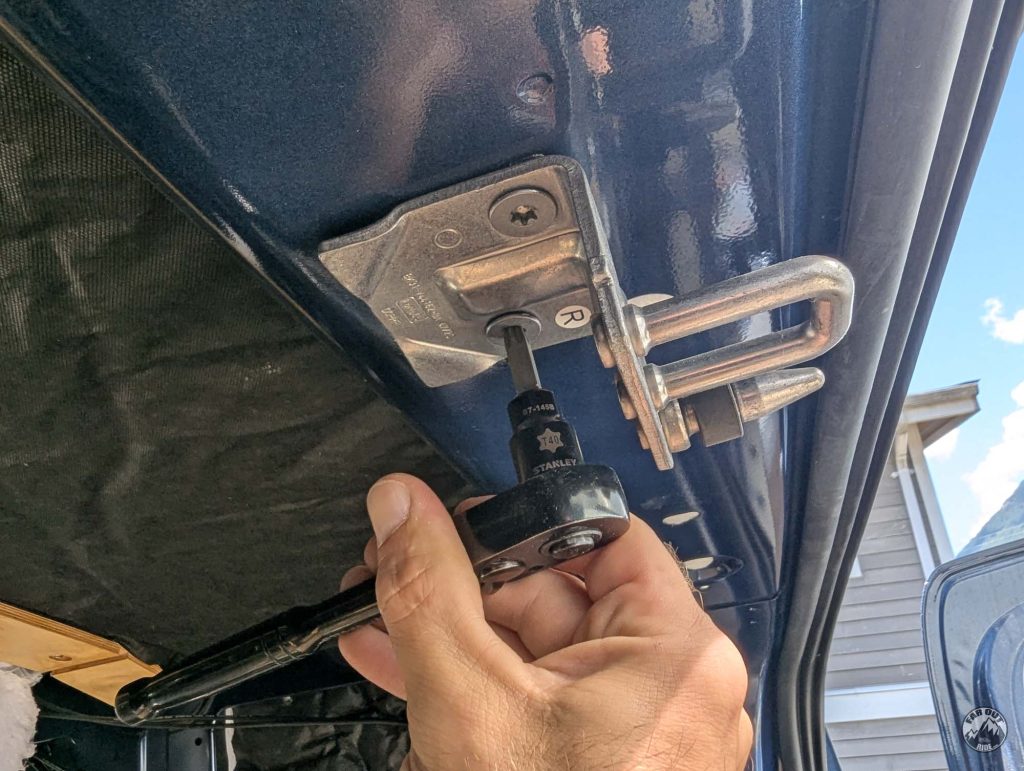
3. Cover the mating surfaces with painter’s tape to prevent adhesive from getting there:
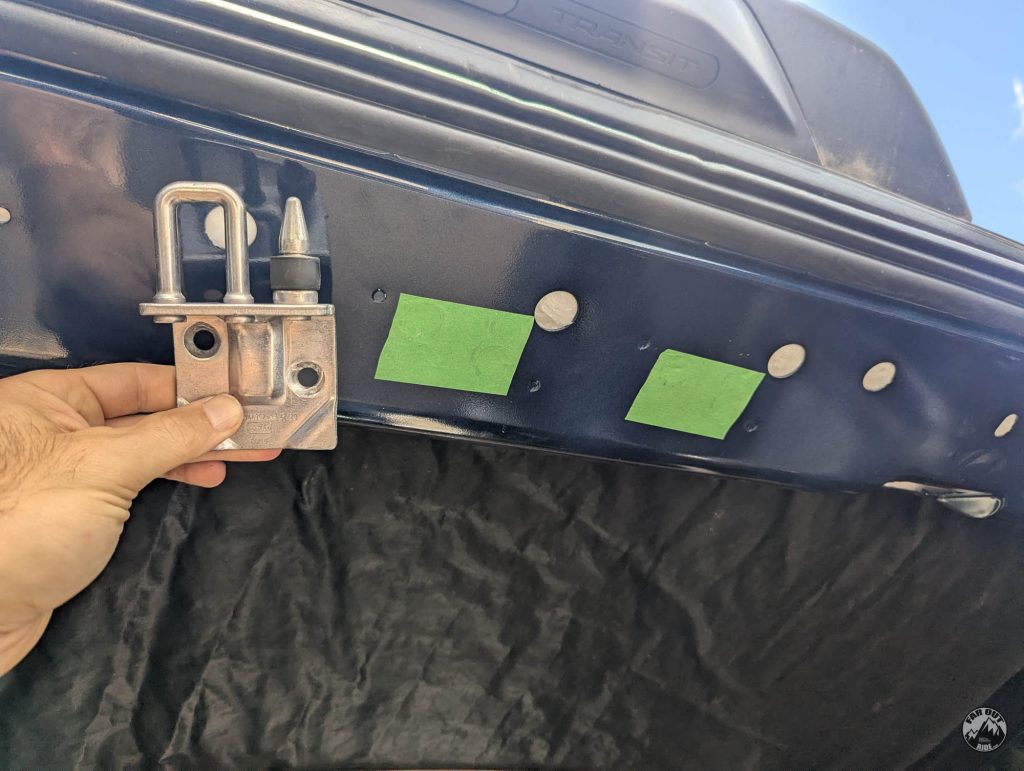
2.4. Remove the door seal
1. Pull the door seal to remove it from the top and side edges:
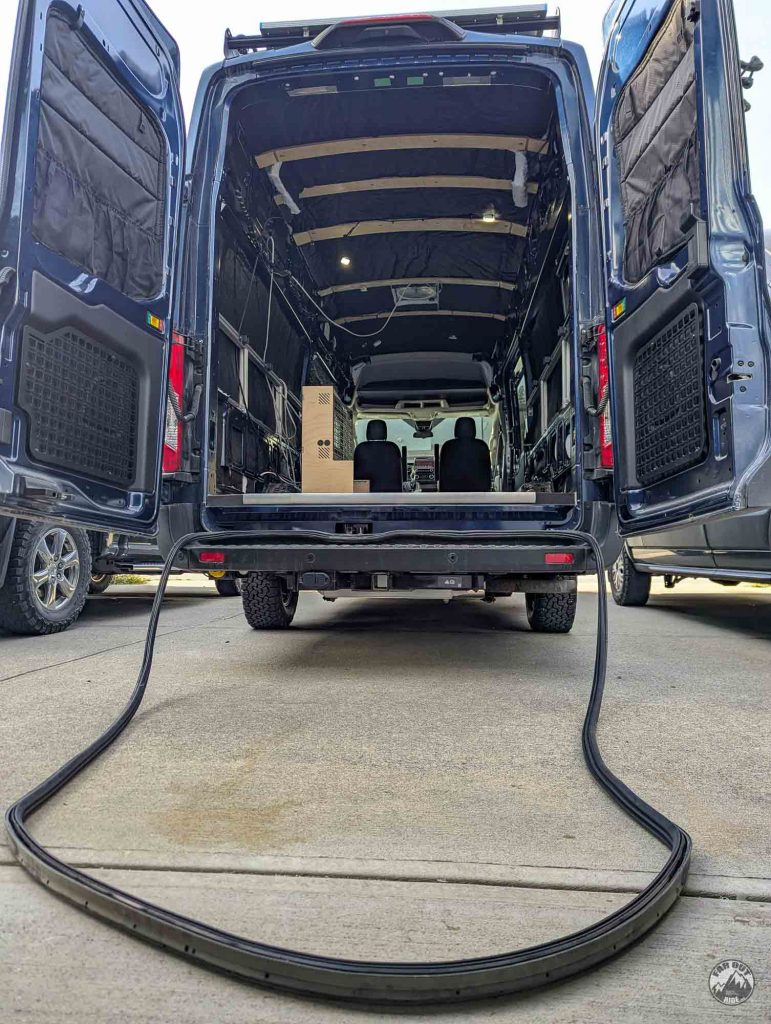
2. Use Isopropyl alcohol to remove the grease:
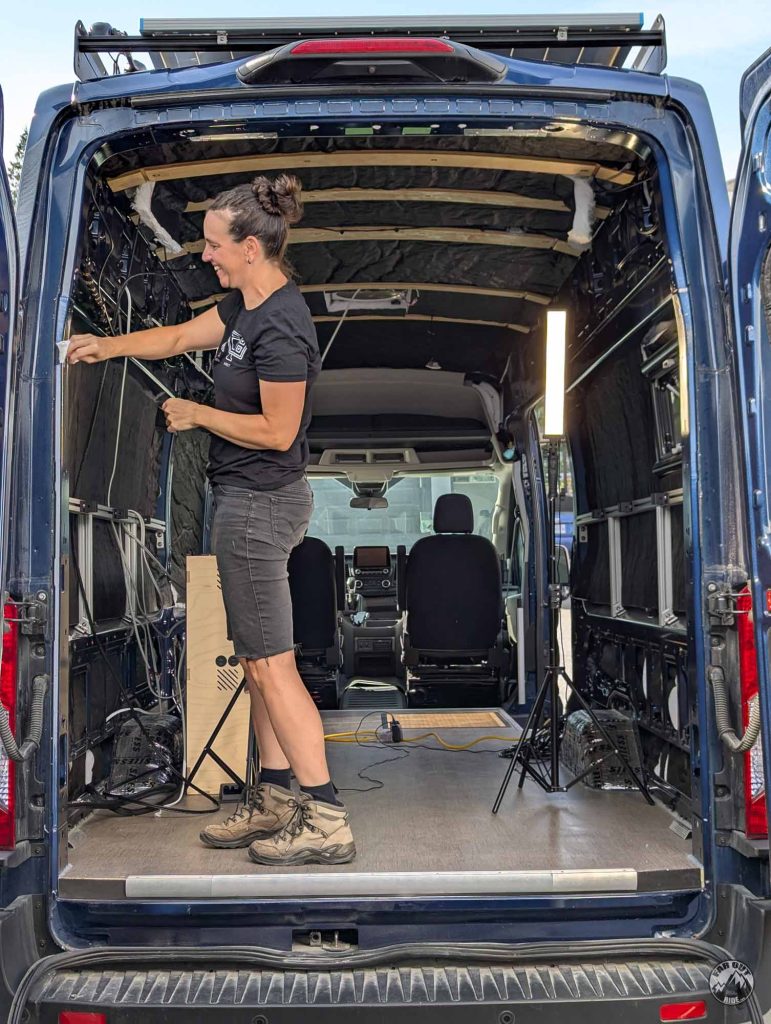
3. It’s OK to leave some grease on the outer edge:

2.5. Clean all the surfaces with Isopropyl Alcohol
2.6. Install the Landau Foam
1. Cut 3 pieces of Landau Foam, leave some extra material to be trimmed flush after installation. Here is what we used:
- Top: 11″ x 60″
- Sides: 14″ x 60″
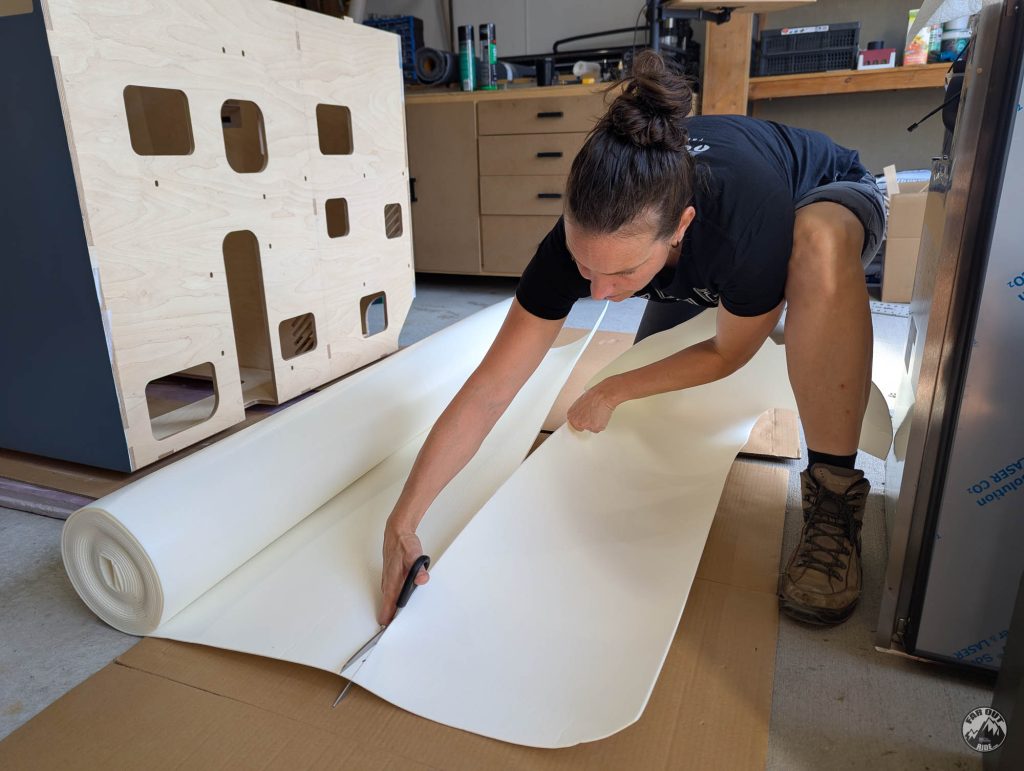
2. Apply adhesive to the Landau and Metal (100% coverage). Try to avoid the edge common with the seal (we don’t want Landau there). Wait 1-2 minutes:
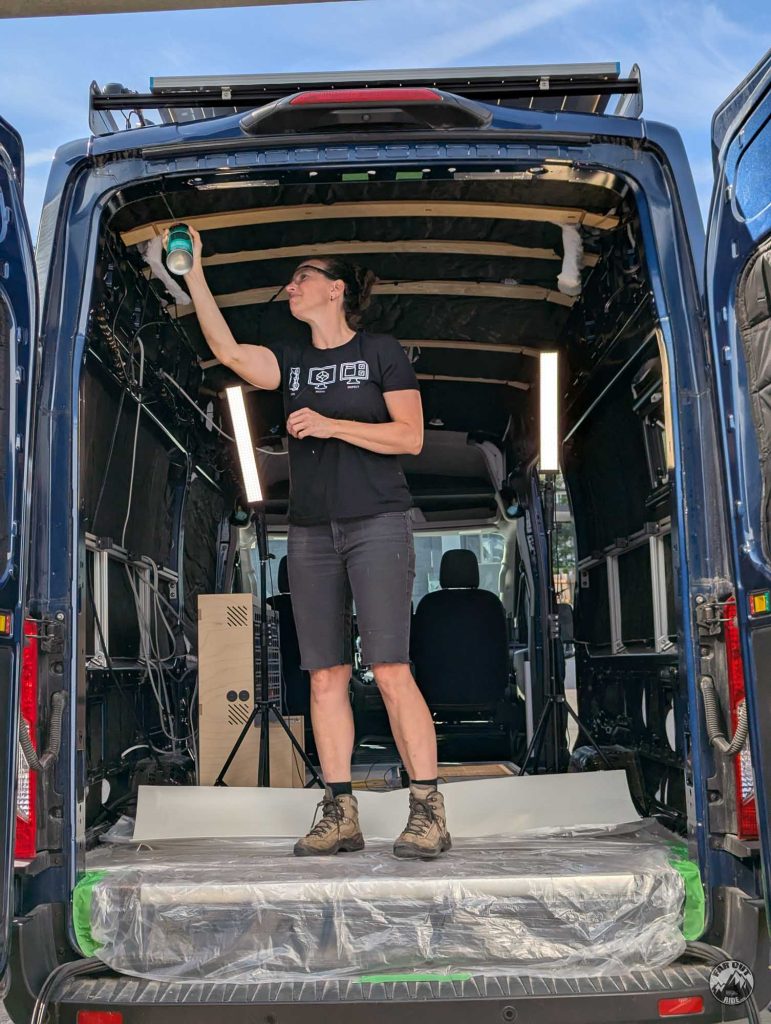
3. Start by bonding the center and work your way outward:
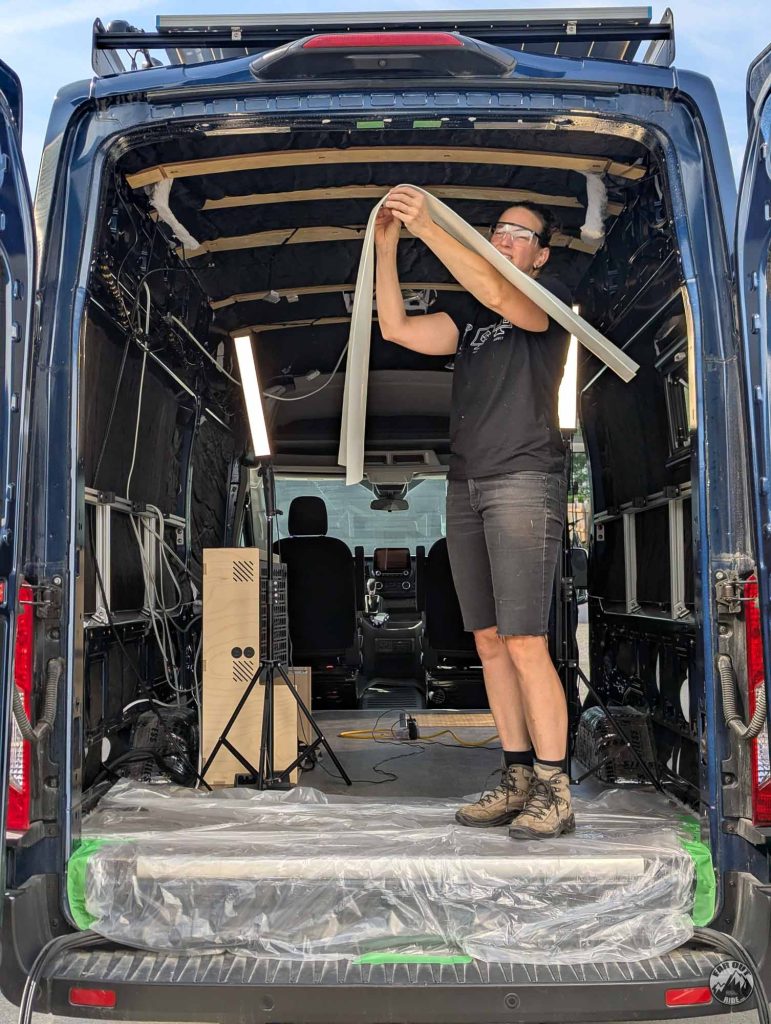
4. Trim the Landau away from the seal surface and from the surface mating with the striker plates:

5. Repeat for the sides (start at the bottom):
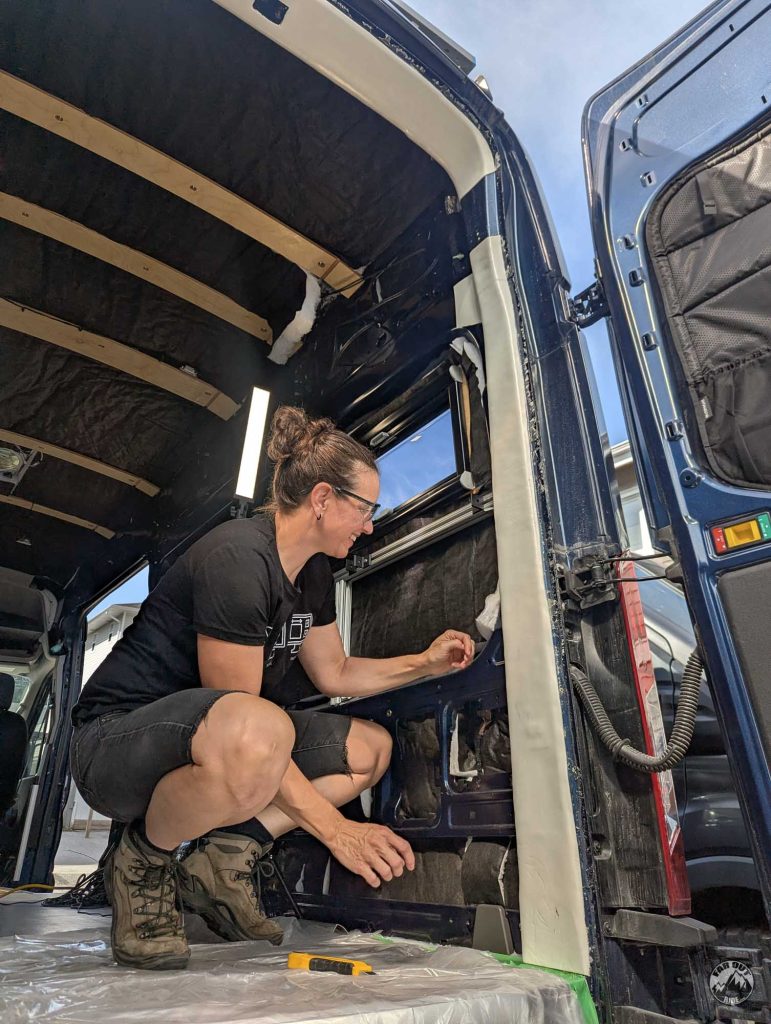
6. Use leftovers to fill the gaps between the top and the sides:
(not shown: reapply painter’s tape to the striker plate surface)
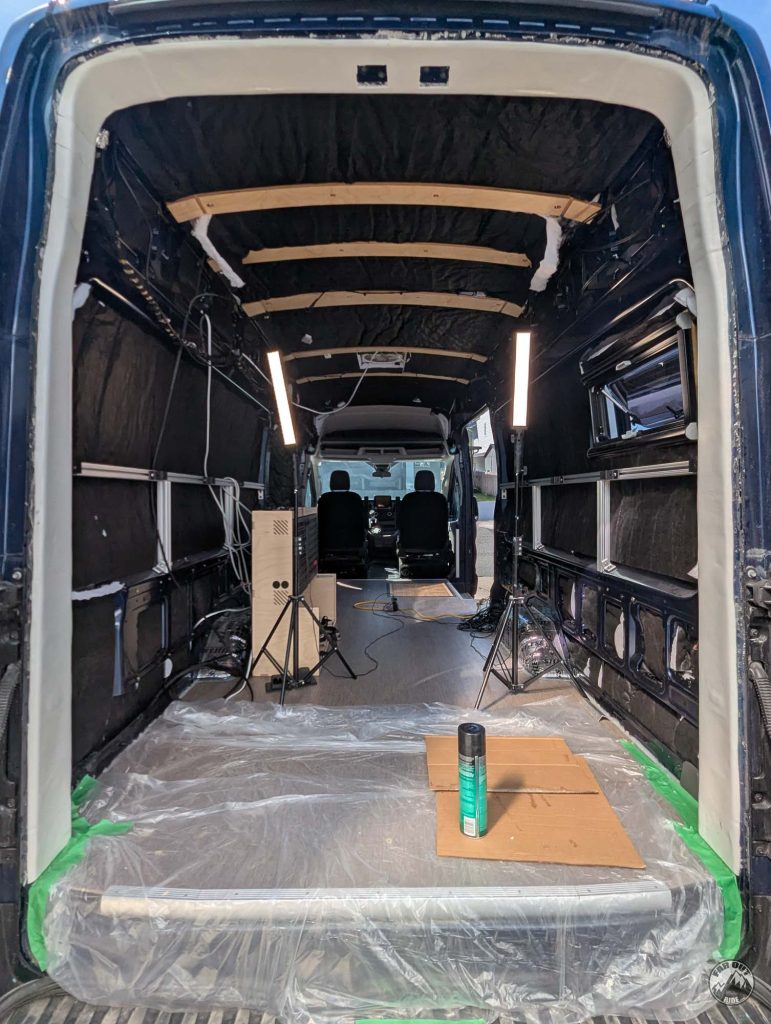
2.7. Install the Fabric
1. Cut three pieces of fabric, leaving some extra material to be trimmed flush after installation. We used 11″ x 54″ for the top, and 14″ x 62″ for the sides (we have a high-roof Ford Transit):

2. Apply adhesive to the fabric, the foam, and to the edge common with the seal (metal). Wait a minute:

3. Bond the fabric starting in the center, and work your way outward:

4. Trim the fabric common with the striker plates:

5. Reinstall the striker plates, ensuring there is no fabric or foam in between:
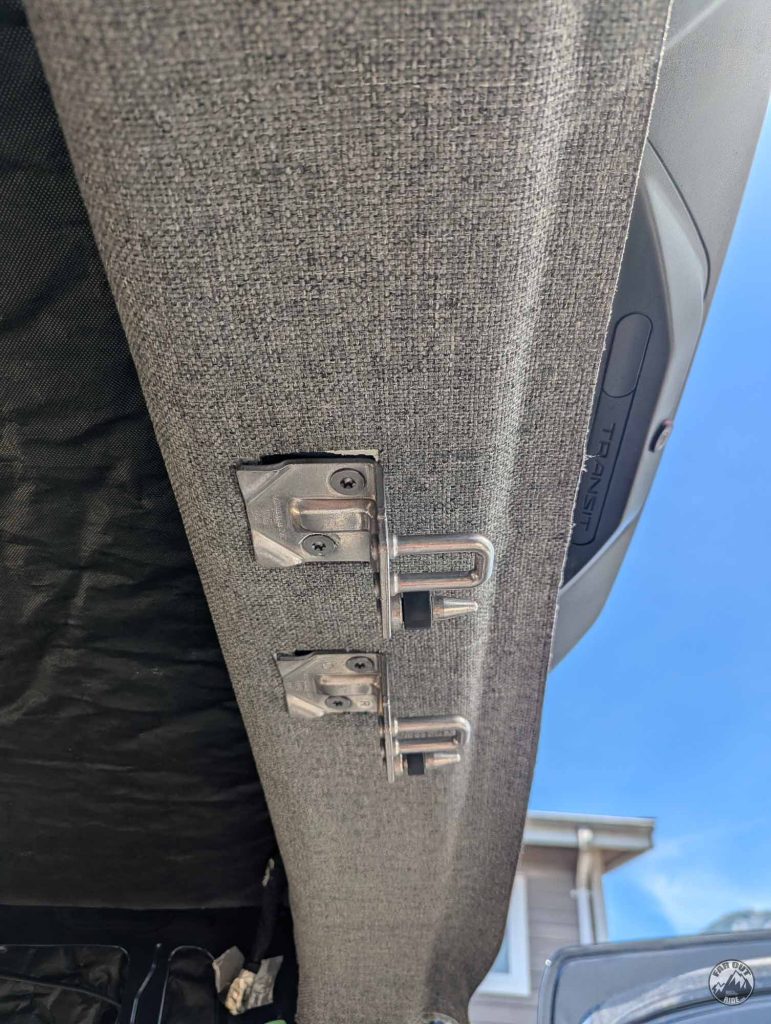
6. Reinstall the striker plate covers:

7. Repeat for the sides. Adhesive:
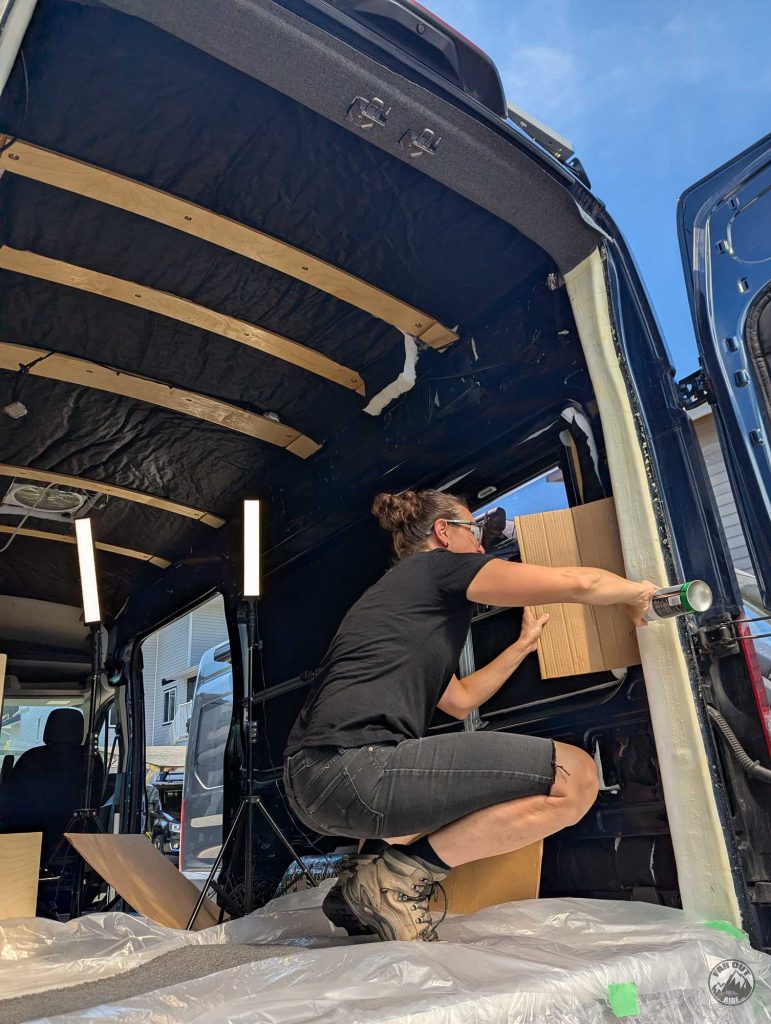
8. Fabric:

9. Trim flush with the edge common with the seal:
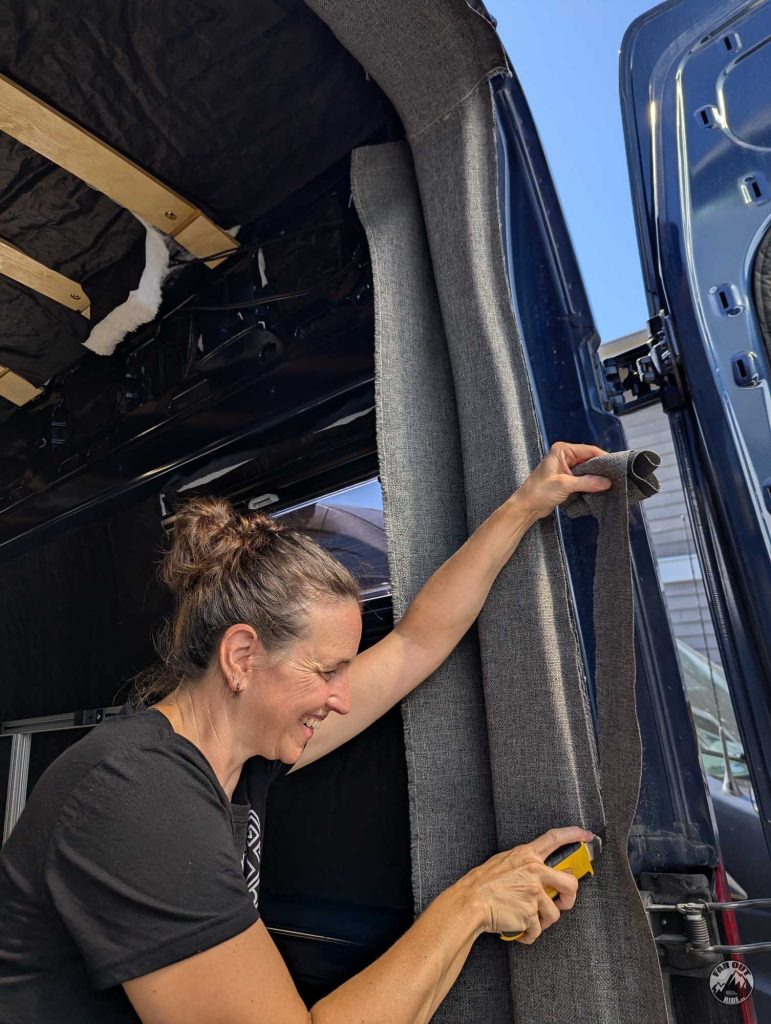
10. The fabric is flush with the seal’s edge (right), but there’s still extra inside (left):
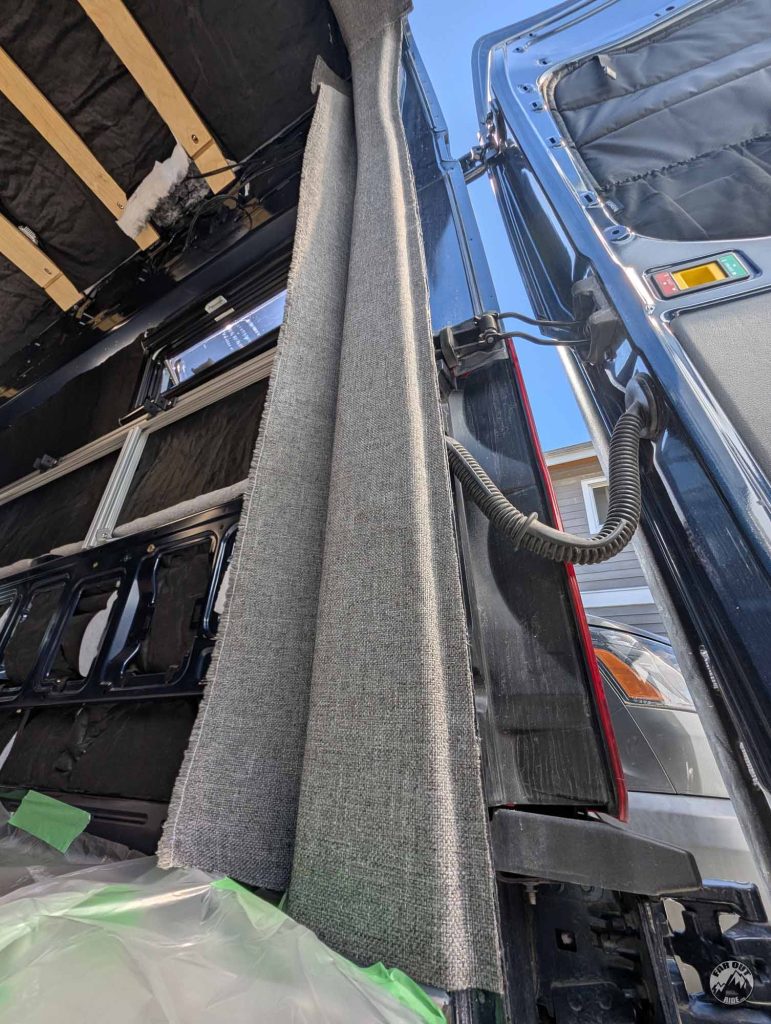
11. We are trimming it to leave approximately an inch extra (it’ll be tucked behind the wall later):

12. Next, we will hide the seams between the top and sides:

13. Isabelle first used paper to find out the proper shape, then cut the fabric per the template she made:
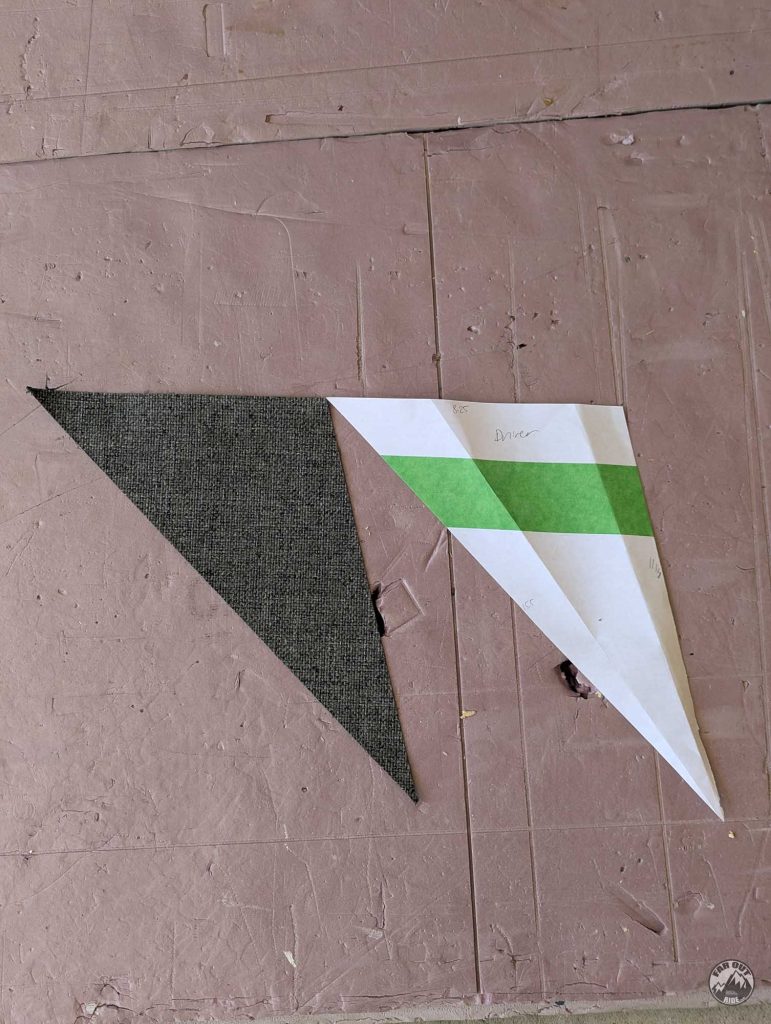
14. Apply adhesive to the back of the fabric, wait 1-2 minutes:

15. Fold the fabric onto itself, like so:

16. We used a roller to make the edges nice and crisp:

17. Protect the adjacent surfaces with painter’s tape, and apply adhesive to both surfaces to be bonded:
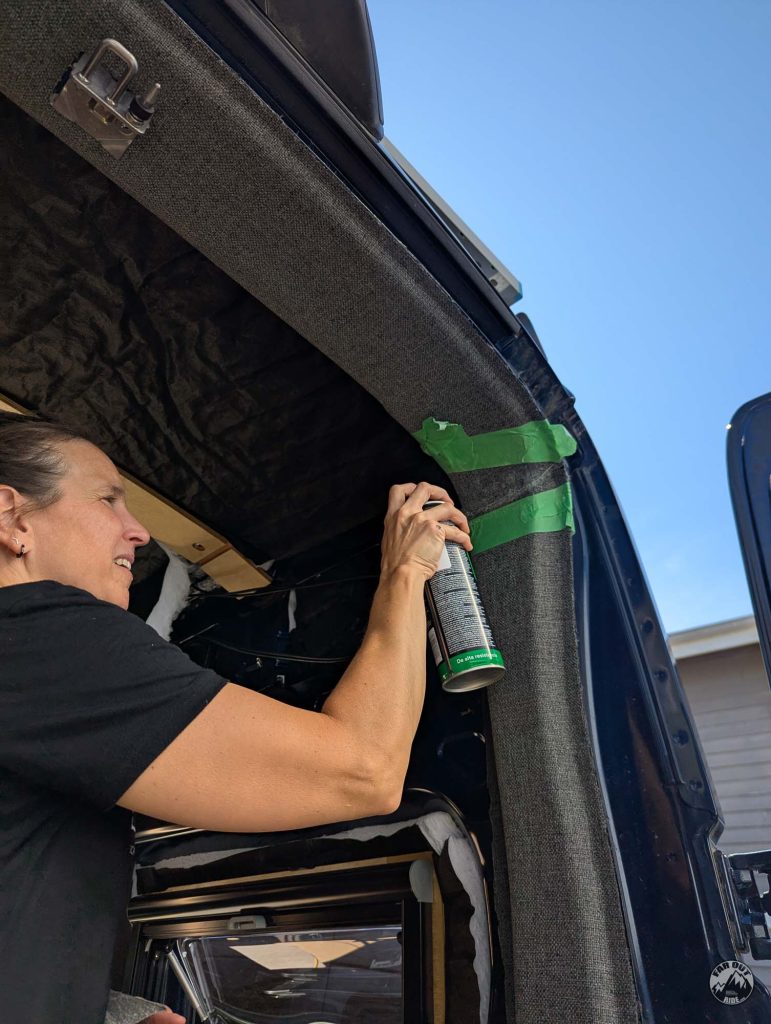
18. Bond the seam trim to the fabric:
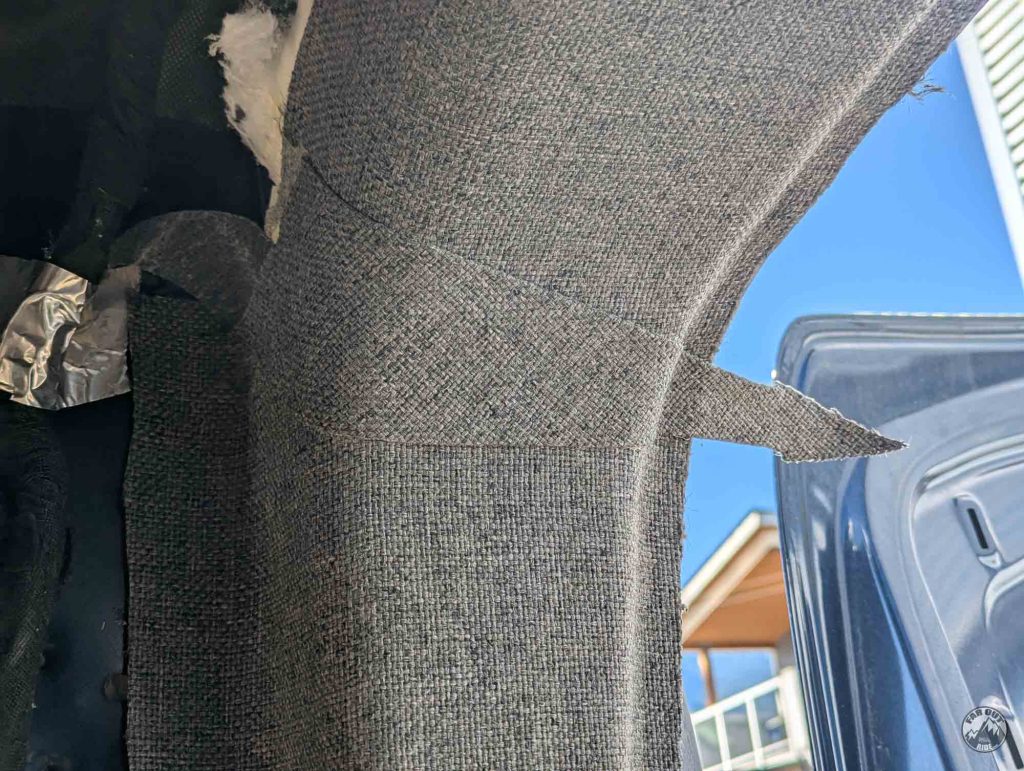
19. Trim it flush:

20. Voilà!

2.8. ReInstall the Door Seal
1. Reinstall the door seal all around:

2. Looking good…

We made it!
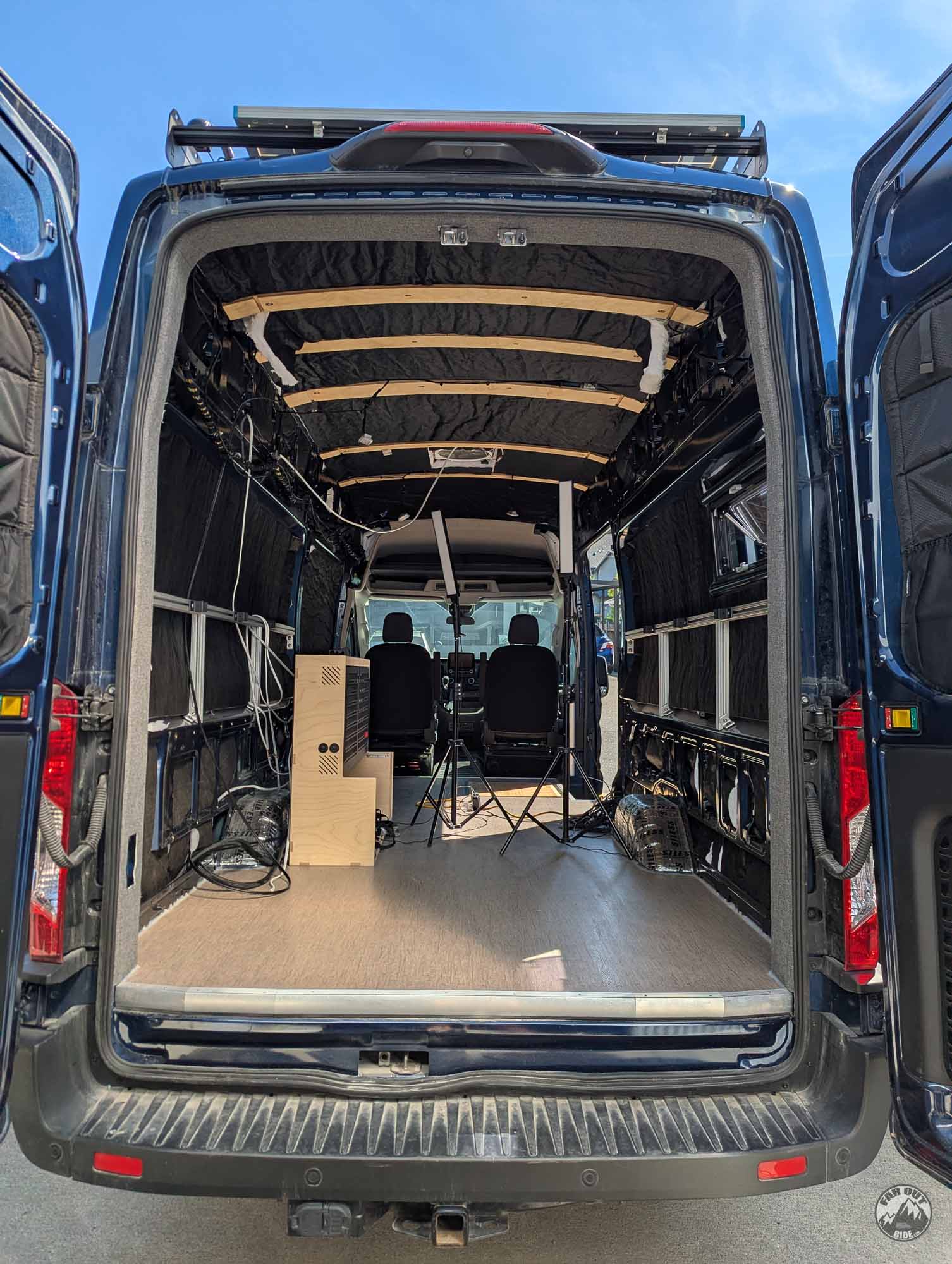
2.9. ReInstall the Air Coupler Plate
1. Use a knife to trim the upholstery around the d-pillar cutout:
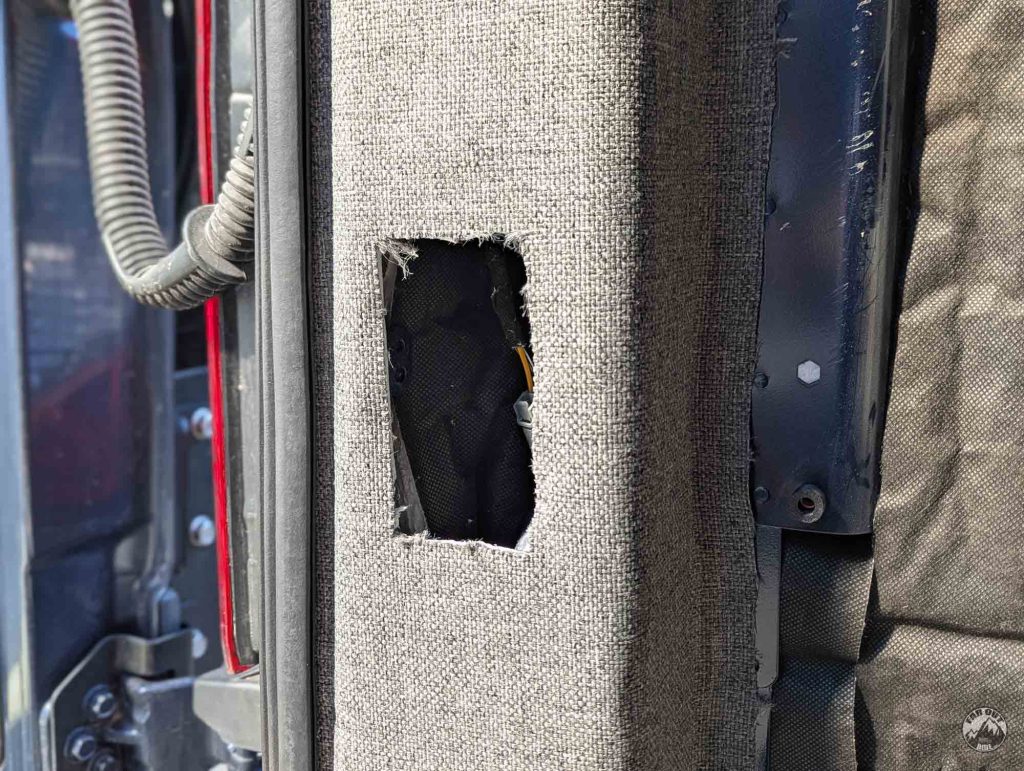
2. Connect the hose and snap the Air Coupler Plate into place:
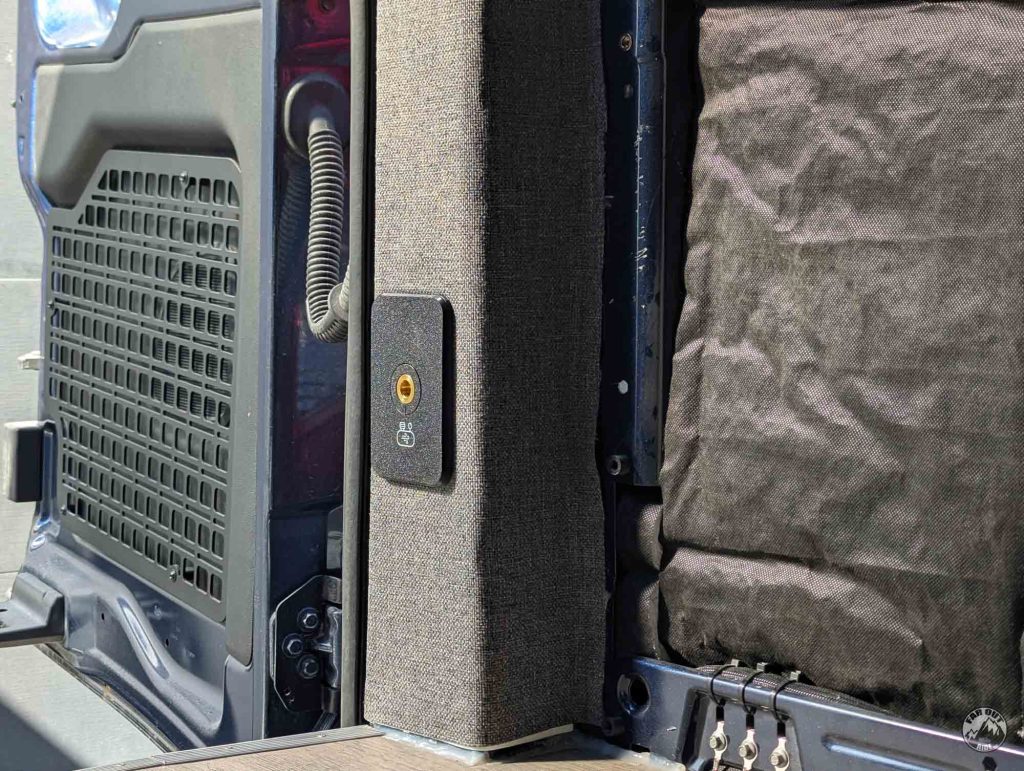
2.10. New Level Unlocked: Electrical Cabinet
And with the D-Pillar wrapped, we can at last install the electrical cabinet permanently, yay!
Thanks to AVC Rig for the valuable tips!
3. Garage Wall Panels
Wait for it!


